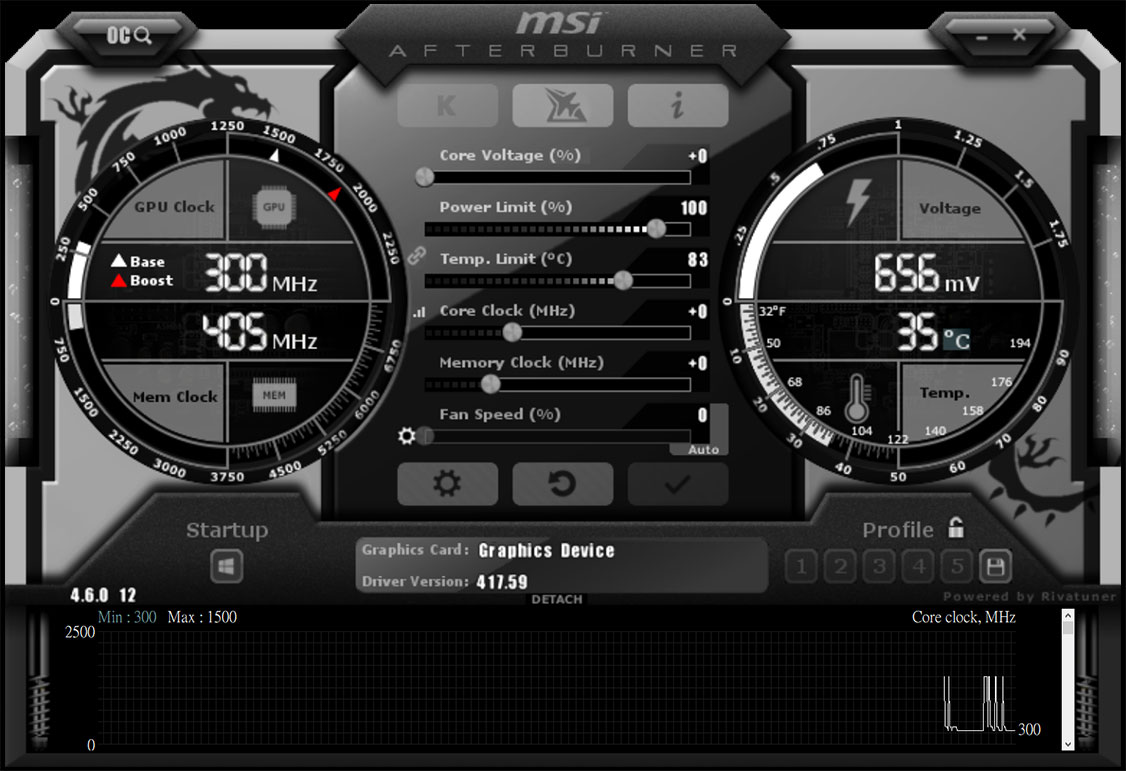
Your card should now be running at a fixed frequency/voltage, and your curve should look like figure 5. #7 Press the check mark button on the main gui to apply your changes. You should see a yellow dotted line pop up on the curve editor. #6 Press CTRL+L right after selecting your voltage/frequency point on the curve. I own a 1080 ti, so I'll be selecting a point on the curve that matches 1093mv. #5 Select a point on the curve that corresponds to your cards max known allowable voltage. #4 Press CTRL+F while msi afterburner is open to open the voltage/frequency curve editor. #3 Open msi afterburner, set core voltage, power limit, and temp limit to their max values. Don't forget to click the check mark button to apply your changes after increasing all settings to their max values.

2b: If you own a non-evga video card, or a video card that doesn't support asynchronous fan control you can use msi afterburner to set your gpu fans to 100% without having to download precision xoc. 2a: If you own an evga video card that includes 9 thermal sensors you'll need to download a copy of evga precision xoc, and use precision xoc to set all your fans to 100% before using msi afterburner to force max voltage/overclock. We are going to be pushing the gpu to max voltage & overclocking so using 100% fan makes perfect since here.

#2 Set gpu fans manually to 100% to keep the graphics card cool. #1 Download & install a copy of msi afterburner.

This guide will be useful to geforce gtx 10 series users as well as future geforce gtx series graphic card users. This guide will describe how to force your video card to run at max voltage & curve overclock using msi afterburner.


 0 kommentar(er)
0 kommentar(er)
